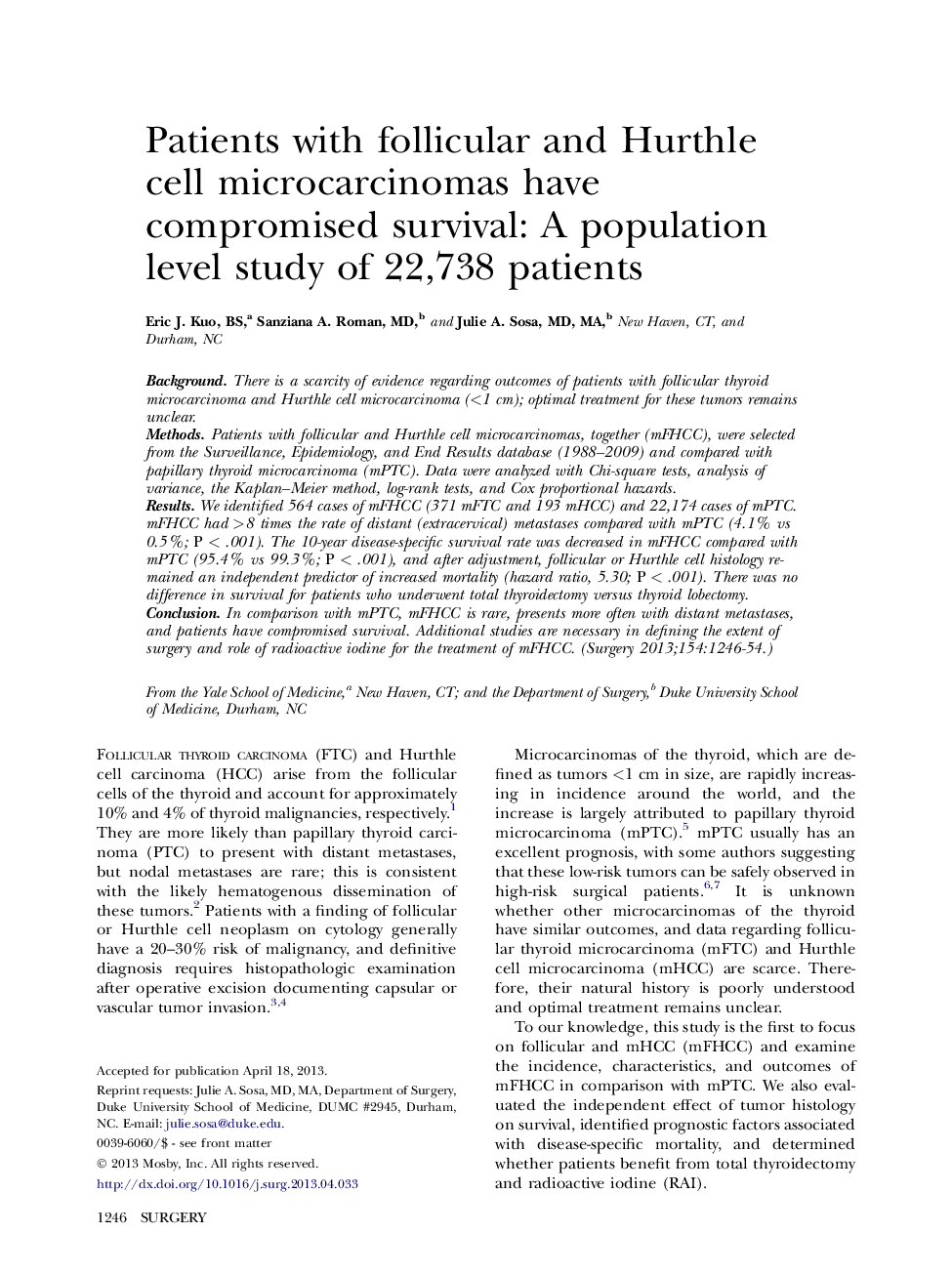| Article ID | Journal | Published Year | Pages | File Type |
|---|---|---|---|---|
| 4307053 | Surgery | 2013 | 9 Pages |
BackgroundThere is a scarcity of evidence regarding outcomes of patients with follicular thyroid microcarcinoma and Hurthle cell microcarcinoma (<1 cm); optimal treatment for these tumors remains unclear.MethodsPatients with follicular and Hurthle cell microcarcinomas, together (mFHCC), were selected from the Surveillance, Epidemiology, and End Results database (1988–2009) and compared with papillary thyroid microcarcinoma (mPTC). Data were analyzed with Chi-square tests, analysis of variance, the Kaplan–Meier method, log-rank tests, and Cox proportional hazards.ResultsWe identified 564 cases of mFHCC (371 mFTC and 193 mHCC) and 22,174 cases of mPTC. mFHCC had >8 times the rate of distant (extracervical) metastases compared with mPTC (4.1% vs 0.5%; P < .001). The 10-year disease-specific survival rate was decreased in mFHCC compared with mPTC (95.4% vs 99.3%; P < .001), and after adjustment, follicular or Hurthle cell histology remained an independent predictor of increased mortality (hazard ratio, 5.30; P < .001). There was no difference in survival for patients who underwent total thyroidectomy versus thyroid lobectomy.ConclusionIn comparison with mPTC, mFHCC is rare, presents more often with distant metastases, and patients have compromised survival. Additional studies are necessary in defining the extent of surgery and role of radioactive iodine for the treatment of mFHCC.
